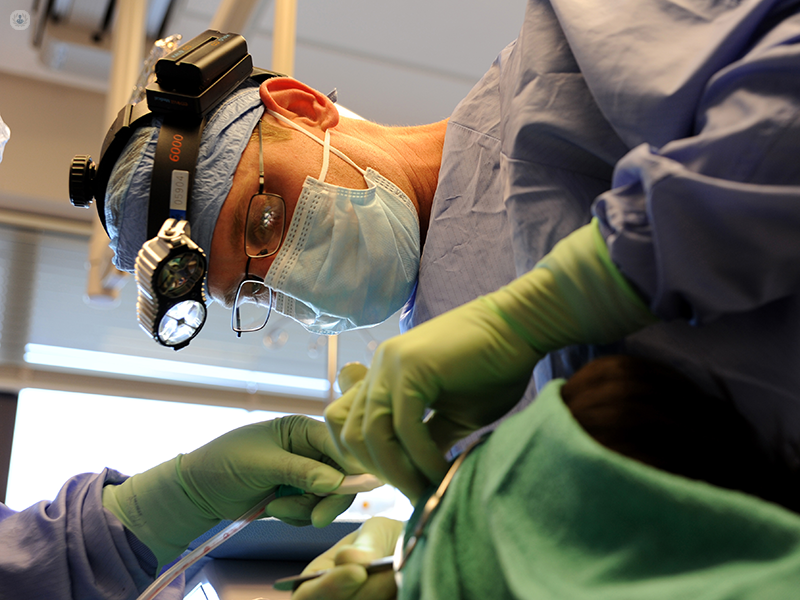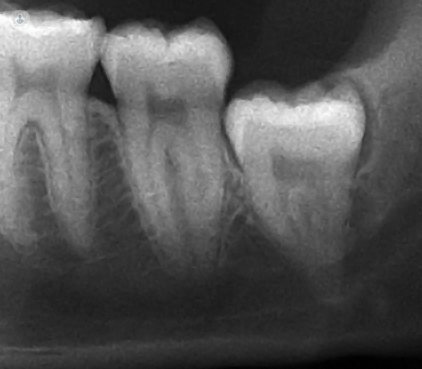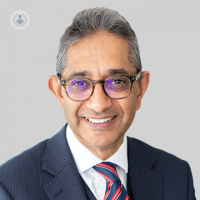Wisdom teeth removal: How it works
Written by:Not all wisdom tooth procedures are the same. Leading consultant maxillofacial and oral surgeon Mr Bhavin G Visavadia explains the difference between how simple and complex wisdom tooth removals are handled, and what recovery can look like.

Wisdom teeth are the last teeth to develop in the mouth. For some people, however, their wisdom teeth will never come through, whereas for others, their wisdom teeth often do not erupt into the correct position. In other words, they have become impacted.
Wisdom teeth might become impacted because of genetic factors, and it may be in our very evolution that this happens. It might also be because of changes in our diet. Eating refined foods can mean that the remaining teeth do not wear enough to allow all the teeth to space together.
Wisdom teeth are removed if, according to NICE Guidelines, they are repeatedly becoming infected, decayed or there is some evidence of pathology associated with them.

To determine whether you are a candidate for wisdom teeth removal, a careful assessment is made often with a simple jaw X-ray (OPG). This looks at the position of the tooth/teeth in relation to an important nerve in the jaw. If the impacted wisdom teeth are involving these dental nerves then a CT scan may be advised to assess this accurately in 3-D.
Occasionally, the surgeon may make a life size surgical model of the jaw to plan the surgery, especially in complicated impactions.
How is wisdom teeth removal performed?
Most difficult impactions require a short general anaesthetic or sedation with local anaesthesia. The procedure depends on the type of impaction you have:
Common impacted wisdom teeth
Wisdom teeth are removed using very precise surgical techniques. We use small incisions to raise the soft tissue and gum away from the tooth. Usually a surgical drill is used to remove small amounts of bone in order to relieve the impaction. The tooth can then be delivered readily. If the tooth is lying horizontally, it needs to be divided and removed in planned fragments.
Complex nerve-related wisdom teeth
For those wisdom teeth associated with the dental nerves in the jaw, special techniques are employed to remove the teeth and preserve the nerves:
- Peizo-surgery – this uses delicate ultrasonic instruments to remove bone and divide teeth but these do not cut soft tissues. The nerves in the area can be gently released away as the teeth roots are mobilised gently from the socket.
- Coronectomy – this techniques allows the crown of the tooth to be removed as well as any associated infection. By preparing the surrounding bone properly the roots can be left in the jaw bone undisturbed, completely preserving the nerve. Whilst there is an evidence base for this procedure, it does mean that occasionally the root fragments may be prone to infection in the future and require further treatment.
Upper wisdom teeth
Impacted upper wisdom teeth are relatively straightforward to remove, as they are not associated with any significant nerves. The roots can reach close to the sinuses and we would advise accordingly if this were the case.
After surgery
After surgery, the socket is cleaned and washed before sutures (stitches) are used to close the area. These stitches dissolve in seven to ten days. Some doctors also place a nerve block, which helps with pain control after surgery.
For maximum recovery and minimum complications, patients are advised to use mouthwashes and a soft diet as well as ice packs to help with any pain. Common over-the-counter painkillers are usually required, and if necessary stronger medication is prescribed after surgery. For example, antibiotics may be given during surgery and sometimes after surgery for more complex or infected wisdom teeth.
Light exercise is recommended, and most people will be able to return to normal activity after a week.
Will I need much time off work?
Patients are usually advised to take four to seven days off for normal work activity – but this does depend on the complexity of the surgery. Most patients have some swelling of the mouth and cheeks at two days post-surgery and this settles during the following week.
If you require removal of a wisdom tooth or teeth removal and wish to schedule a consultation with Mr Visavadia, you can do so by visiting his Top Doctors profile.


